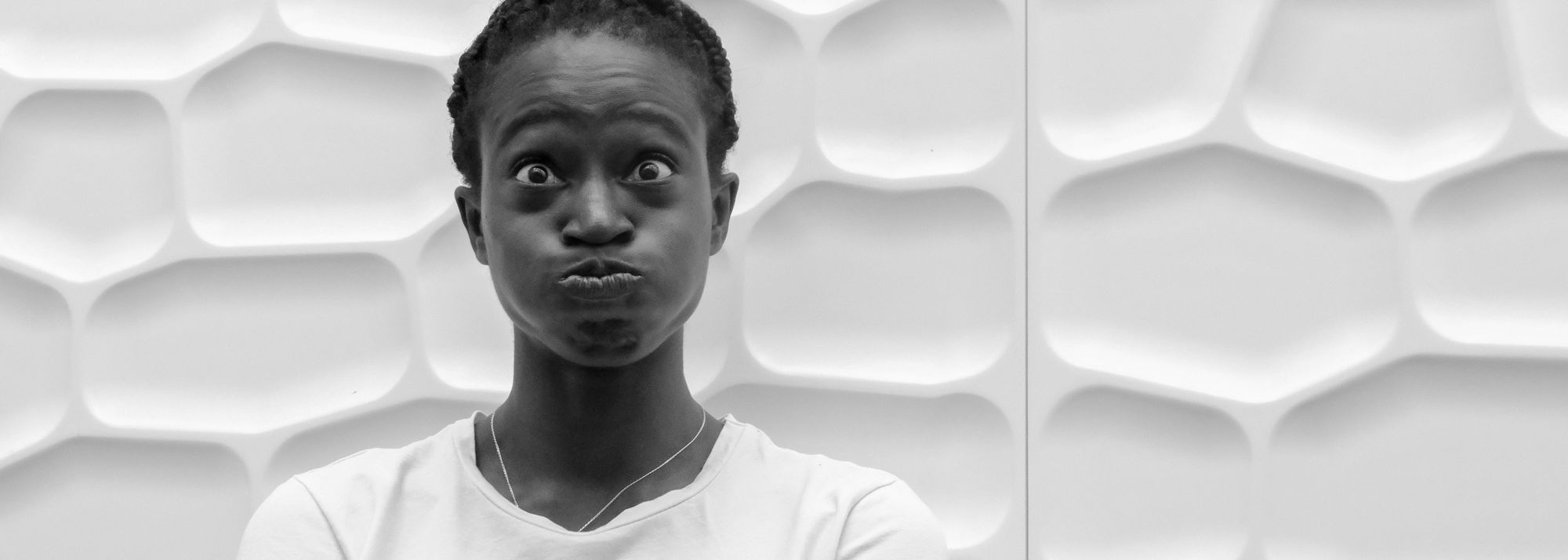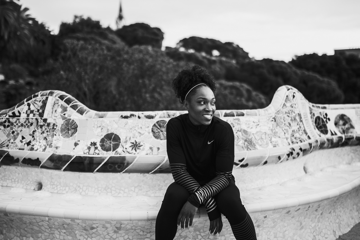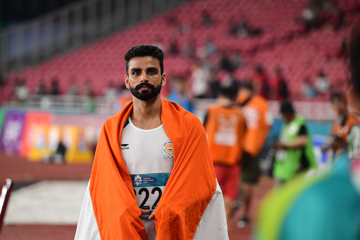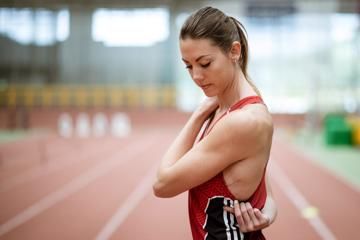Naa Anang pulling faces during a photo shoot (© Michelle Sammet)
by Naa Anang
Life is all about choices – the script we write today is what we live through tomorrow. But whether you win or lose, succeed or fail, the one thing I know is it’s a lot easier to live with those choices when they’re made with good intentions.
To go anywhere in sport, you have to prioritise. How much does it matter compared to everything else? It’s something no coach, no parent, no teacher, can decide. It has to come from you.
And sometimes, if there’s no one else around, you simply have to back yourself.
In Australia, the reality is it's hard to make money in athletics. You sometimes have to rely on the support of others to get to international competitions – that’s where you often have to roll the dice on your talent.
It’s what I did in 2017. The previous year I had missed out on the Olympics and, more than anything, I wanted to make it to World Championships in London. I knew I had to get to Europe to reach the next level so I paid my own way there and, in July that year, I was rewarded with a PB of 6.68m.
London didn’t go as planned, but the memory of getting there – of being there – will stay with me forever.
That’s the thing about this sport: there’s a lot of sacrifices and things you have to prioritise, but it’s worth it, at the end of the day.
Money and time? They will disappear. You can’t take it to the grave, but what you can hold throughout your whole life are memories. They’re priceless.
As a kid, I never dreamed about being an athlete. This wasn’t part of my plan.
I was born in Ghana, my family moving to Australia when I was six months old. My name, Naa, means princess, but growing up with two older brothers meant I was more of a tomboy, used to having to fight all the time. In the end that stood to me.
When I was selected for my first international – the Commonwealth Youth Games in 2011 – I was 16 and didn’t even know you could travel for sport. Then I found it was all free – awesome.
Long before I made that team, though, I had learned about the hard side of athletics – the injuries.
At the age of 14 I broke my tibia and was out for two years, then after the Commonwealth Youth Games I got stress fractures in my back and was out for another two years. In 2014 I got back competing and qualified for World Juniors in Oregon, but the day before we left I tore my hamstring.
So yeah, it hasn’t exactly been smooth sailing.
But times like that make you appreciate the moments when you are competing, even when the performances aren’t as great as you hoped.
At least I’m out there. There were times when I was sitting on the side line hoping to be out there.
You need people to lean on. I’ve always been lucky to have my family because they see the whole side of everything, supporting me as a person, not just as an athlete.
Then there’s my coach, Gary Bourne, who’s been there the whole time. It would have been easy for him to be like, ‘You’re getting injured all the time, you’re not going to make it,’ but he always believed in me.
Over the years, this sport taught me a lot about perseverance, about dreaming big and following your passion. It also taught me about prioritising – I’m currently studying physiotherapy at university, but I took time out from that to compete at my first Diamond League in Doha earlier this month.
Those chances don’t come along often. You have to seize them when they do.
It’s what I often tell young people as part of a programme I’m involved in called Olympics Unleashed. It’s run by the Queensland Academy of Sport and the Australian Olympic Committee and involves athletes speaking to kids about unleashing their passion in life – whether it’s sport, or art, or music.
When I do that, I often find I’m the one who benefits most. When I tell my story I realise, oh, I did do that and yeah, that was really hard, but I persevered and now that I’m on the other side, it doesn’t seem so bad.
Sometimes you need to stop like that to get some real perspective, to reflect on how far you’ve come. Before this year, my long jump PB was 6.68m but now it’s 6.81m. If I can keep jumping in that region, hopefully being on that Diamond League circuit will become the new normal.
I still have so much to learn. In that sense, I’m lucky I train with more experienced long jumpers in Queensland like Carlee Beattie and Henry Frayne. I try to use their depth of knowledge as much as possible.
The biggest thing they've taught me?
Trying hard – do that every day, and a lot of good things tend to fall into place. And no matter the result, you can look in the mirror and feel proud. You can have no regrets.








